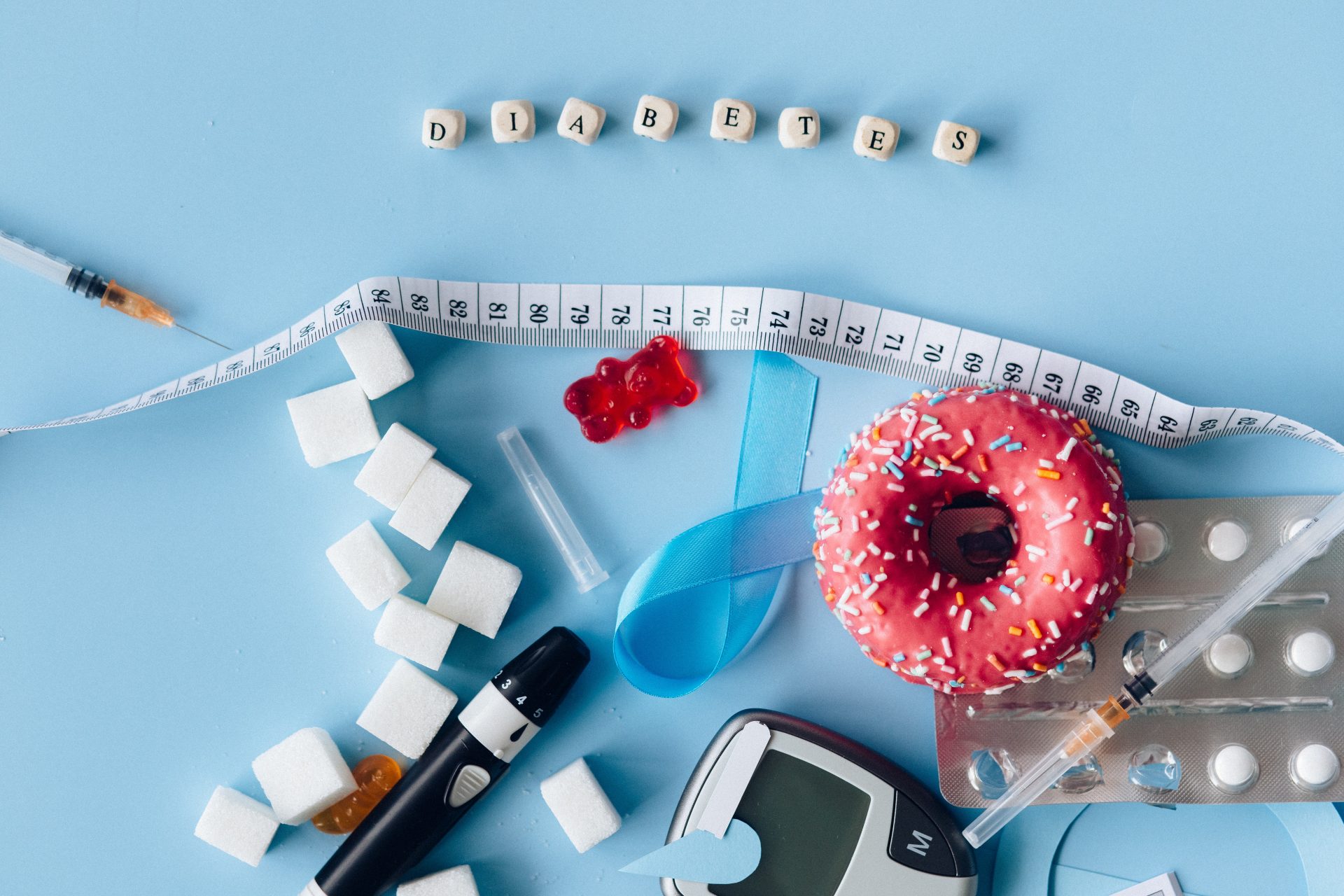DIABETES 101
Even though diabetes is one of the most common diseases for the last 10 years, it is an issue that is not emphasized by many people. This is shown, as some individuals try to find the cause of some of their physical symptoms without even realizing that they have diabetes. Therefore, it is very important to understand what diabetes is and take the necessary actions.
When you eat, many of the meals turn into glucose, the body’s biggest source of energy. In a healthy human body, insulin is secreted in the right amount at the right time, and thus glucose enters the cells. Thus, the glucose level remains within the normal range. However, very little insulin is secreted in diabetic patients, the cells cannot use this insulin, the liver secretes too much glucose and the blood sugar in the body rises considerably. Diabetes is a chronic disease that occurs when the body cannot get the energy it needs from the food it eats and cannot process the sugar it receives as it should. One of the most important factors in this process is “insulin”. Through insulin, the body carries the newly digested glucose from the blood to the cells in order to obtain energy. When you have diabetes, your body does not produce insulin or cannot use the insulin it produces as it should. Thus, glucose accumulates in the blood and cannot be used.
Although there are many types of diabetes, the most common types are Type 1 and Type 2 Diabetes. In type 1 diabetes, the insulin-producing cells in the pancreas do not work, so the body cannot produce any insulin at all. Although the causes of type 1 diabetes cannot be determined precisely, it can be said that some factors such as genes and viruses are effective. Again, in Type 2 diabetes, which can occur due to genes, not being overweight or doing very little physical activity, the power of the pancreas to produce insulin gradually decreases and the cells cannot use insulin well.
The answer to the question of who is more prone to diabetes is not certain. A person of any age group can get diabetes. However, type 1 diabetes usually occurs during childhood and adolescence, but this does not prevent adults from being diagnosed with type 1 diabetes. Studies have shown that people who are breastfed as infants and start solid foods at a later age are less likely to develop type 1 diabetes. However, type 2 diabetes is much more common than type 1 and accounts for about 90% of diabetes cases. Some of the important risk factors for type 2 diabetes are: old age, family history of diabetes, being obese, polycystic ovary syndrome, inactivity.
While the symptoms of Type 1 diabetes appear within a few weeks, the symptoms of Type 2 diabetes may develop much more slowly. This is why some people do not notice any symptoms. In addition, many people with type 2 diabetes have no symptoms. They can find out if they have a diabetes-related health problem, such as blurred vision or a heart attack. Still, the most common symptoms of diabetes can be as follows: increased thirst and hunger, frequent urination, fatigue and weakness, numbness in the hands or feet, unexplained weight loss.
Self-measurements of blood at home are not enough to tell whether you have diabetes or not. A visit to a healthcare professional will provide you with reliable information about whether you have diabetes or not. However, there are things you can do to manage your diabetes safely once you’re diagnosed. Knowing your diabetes ABCs will help you to manage your disease and make your life better. Here “A” is for the A1C level of your blood sugar. For people with diabetes, this value is below 7%. The A1C level is usually measured every three to six months. The “B” is for blood pressure. For most people, the goal is below 140/90 mmHg but it can be lower if the one is younger or has kidney disease. “C” corresponds to cholesterol. It is very important to monitor the value of your good and bad cholesterol according to your age. And lastly, the “s” is for smoking. If you have diabetes, quitting smoking will be much better for your health because smoking raises your risk of heart and kidney disease, nerve damage and amputation.
Despite all the risk factors, we can reduce the chances of developing diabetes in high-risk people and the chances of developing diabetes complications through blood pressure and glucose control, cholesterol checking and early diagnosis and treatment. So don’t worry if you or someone close to you has diabetes. Diabetes is an important health problem, but with regular nutrition, exercise and the right treatment, you can lead a healthy and beautiful life.
If you think you can benefit from professional support on this issue, you can book an appointment here.
Ezgi Nur Budak has a bachelor’s degree in psychology, and she is an intern at Health Clinic of Willingness.
References
Campbell, A. (2021) Diabetes 101. Diabetes Self Management.
Diabetes 101: A Brief Overview of Diabetes and the American Diabetes Association
Diabetes 101: Taking Charge 3rd ed. Original publication date 2013
https://healthblog.uofmhealth.org/health-management/diabetes-101







